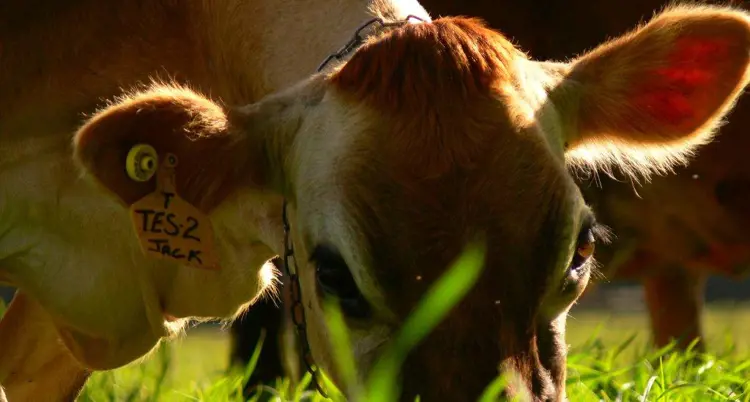
- A beginning phase of 0 to 5 months old
- A young phase of 6 to 8 months old
- A puberty phase of 9 to 14 months old
- A gestation phase of 15 to 24 months old
The beginning phase (0 - 5 months)
It is very important for a calf to have enough colostrum during the first three days of its life.It is the foundation for a healthy calf. The goal in this phase is maximum daily growth during the milk stage. In this phase, we suggest feeding calf starter pellets with a minimum of 18% protein and enough associated energy. Animals at this age should not receive any form of urea. During this phase, roughage makes a minimal contribution to rumen development and is not important at this stage. Inclusion of a coccidiostat in calf pellets is beneficial because it helps to limit diarrhoea during this phase.
A heifer calf is ready to wean if she consumes 1 kg of calf starter pellets for three days consecutively. After weaning, a feed with high roughage content can be fed to the calf. The weaning process should preferably be done in two phases, where, firstly, milk and milk substitute intake is halved in the first seven days and, secondly milk intake is stopped. Successful growth can lead to calves being weaned as early as 30 days of age; although the norm is 35 to 42 days.
The young phase (6 - 8 months)
During this phase it is important to utilise the rapid growth rate of the animal to maximise and to initiate further successful rumen development. It is recommended that high quality roughage is fed together with a high quality calf starter feed at this stage. Furthermore, a minimum of 17% protein, with high levels of energy, is recommended. Although, from the age of six months, urea and silage can be included in the calf's diet.
The puberty phase (9 - 14 months)
The puberty phase is a very important growth phase and is often the most neglected growth phase in rearing heifers. Animals are placed in the field at this stage, or they often receive feed with the wrong protein to energy ratio that may undo all the good work that was done in the first eight to ten months of a heifer’s life. The aim in this phase is to grow the animals in height and to reduce the deposition of fat. Fat deposition during this phase, as well as during the subsequent phase, may have a negative effect on udder development and may result in lifelong production losses. A ration containing at least 15% to 16% crude protein is recommended. Another requirement is that these rations have lower energy levels. Make use of a high quality roughage together with heifer growth pellets. Limit silage - not more than 15% usage in the ration.
The gestation phase (15 - 24 months)
It is still important to limit fat deposition during this phase. Heifers are inseminated at this stage. Be aware that animals that are too fat tend to experience reproductive problems. The roughage portion of the Total Mixed Ration (TMR) is increased significantly. The TMR should contain 15% protein with energy being further reduced in comparison to the previous phase. Ensure that the mineral levels in the ration are correct. In normal feeding practises farmers tend to place this age group out on normal veld grazing with the only additional supplement in the form of a mineral supplement
Speak to your Technical Advisor about ways to bring your current system in line with the nutritional needs of young animals. Ultimately, good practice in this regard is like any other form of insurance, capital well spent on your own future.
